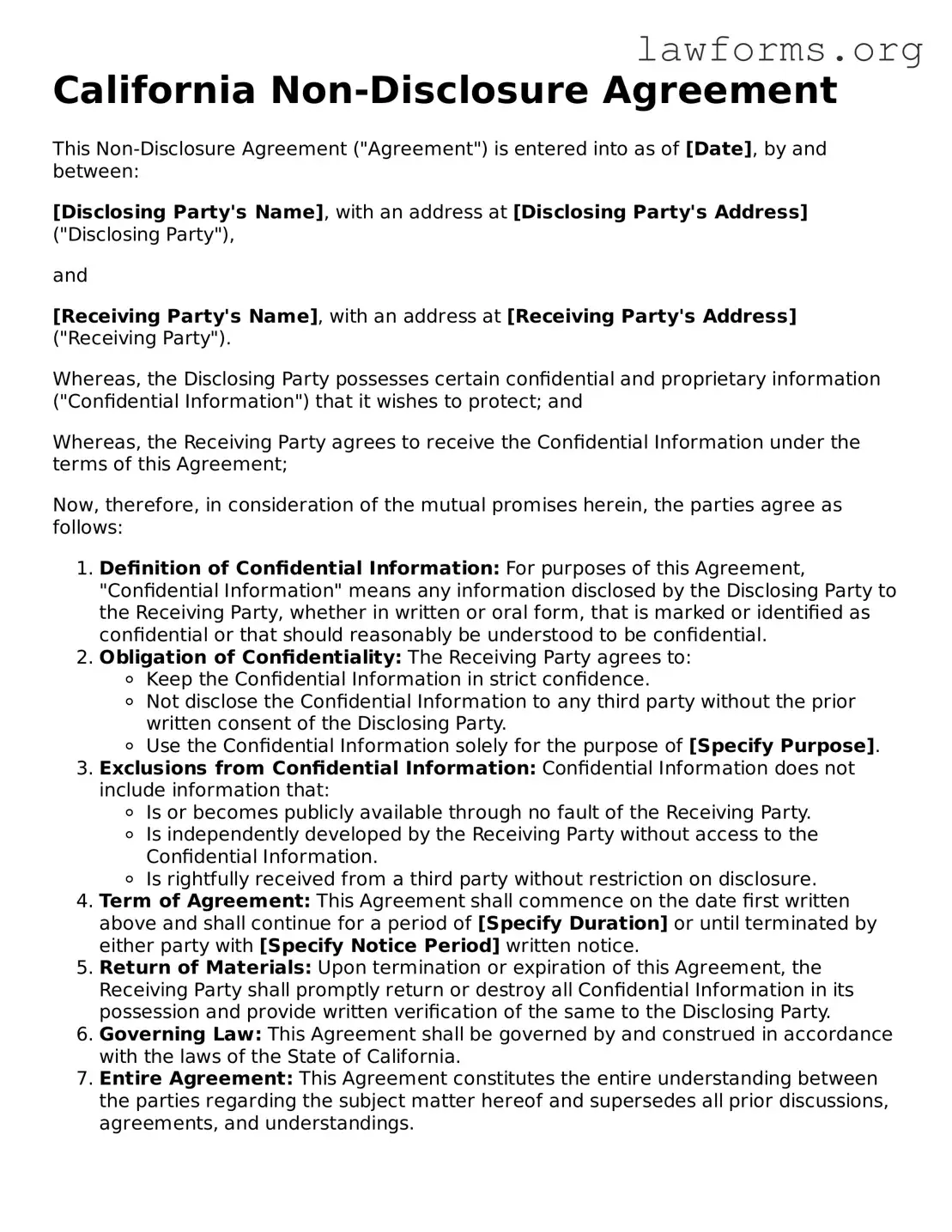California Non-Disclosure Agreement
This Non-Disclosure Agreement ("Agreement") is entered into as of [Date], by and between:
[Disclosing Party's Name], with an address at [Disclosing Party's Address] ("Disclosing Party"),
and
[Receiving Party's Name], with an address at [Receiving Party's Address] ("Receiving Party").
Whereas, the Disclosing Party possesses certain confidential and proprietary information ("Confidential Information") that it wishes to protect; and
Whereas, the Receiving Party agrees to receive the Confidential Information under the terms of this Agreement;
Now, therefore, in consideration of the mutual promises herein, the parties agree as follows:
- Definition of Confidential Information: For purposes of this Agreement, "Confidential Information" means any information disclosed by the Disclosing Party to the Receiving Party, whether in written or oral form, that is marked or identified as confidential or that should reasonably be understood to be confidential.
- Obligation of Confidentiality: The Receiving Party agrees to:
- Keep the Confidential Information in strict confidence.
- Not disclose the Confidential Information to any third party without the prior written consent of the Disclosing Party.
- Use the Confidential Information solely for the purpose of [Specify Purpose].
- Exclusions from Confidential Information: Confidential Information does not include information that:
- Is or becomes publicly available through no fault of the Receiving Party.
- Is independently developed by the Receiving Party without access to the Confidential Information.
- Is rightfully received from a third party without restriction on disclosure.
- Term of Agreement: This Agreement shall commence on the date first written above and shall continue for a period of [Specify Duration] or until terminated by either party with [Specify Notice Period] written notice.
- Return of Materials: Upon termination or expiration of this Agreement, the Receiving Party shall promptly return or destroy all Confidential Information in its possession and provide written verification of the same to the Disclosing Party.
- Governing Law: This Agreement shall be governed by and construed in accordance with the laws of the State of California.
- Entire Agreement: This Agreement constitutes the entire understanding between the parties regarding the subject matter hereof and supersedes all prior discussions, agreements, and understandings.
IN WITNESS WHEREOF, the parties have executed this Non-Disclosure Agreement as of the date first above written.
Disclosing Party:
__________________________ [Signature]
Name: [Printed Name]
Date: [Date]
Receiving Party:
__________________________ [Signature]
Name: [Printed Name]
Date: [Date]
